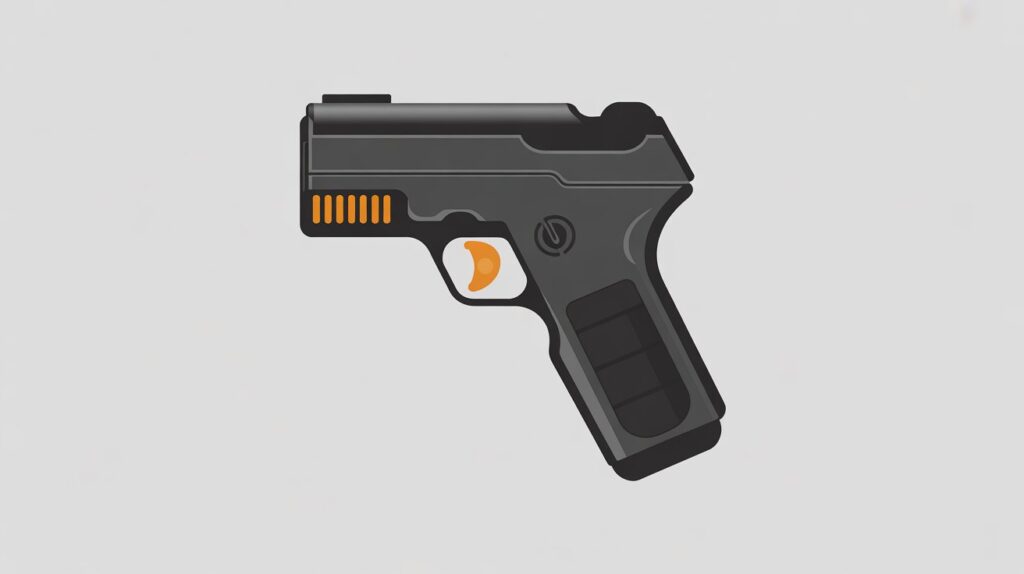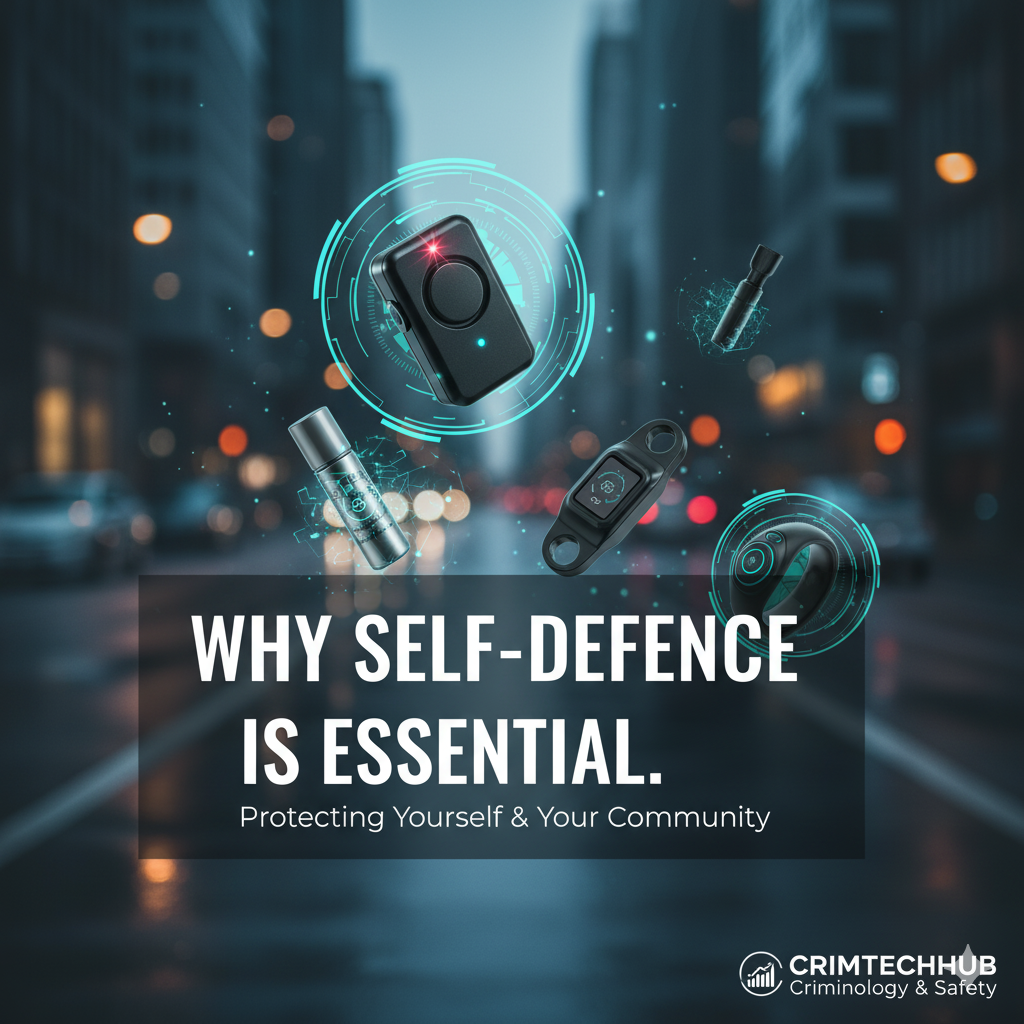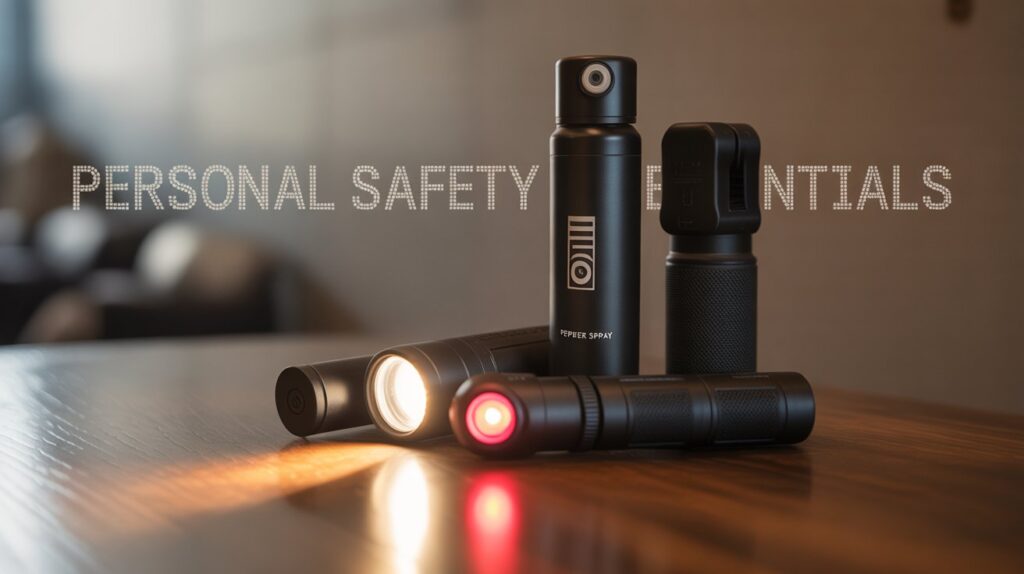
1. Introduction
Have you ever felt a sudden chill walking alone at night, wishing you had a way to protect yourself? Feeling vulnerable is unsettling, but understanding how stun guns work can give you real confidence and control. These small devices pack surprising power, yet they are designed to keep you safe without causing permanent harm.
In this article, you’ll discover the science behind stun guns, how they affect the body, what safety features to look for, and the common myths that often confuse new users. By the end, you’ll know not just how to carry one — but how to use it responsibly to stay safe.
Table of Contents
2. What Is a Stun Gun?
A stun gun is a small, handheld device designed to temporarily disable an attacker using electric shock. Unlike weapons meant to cause permanent harm, stun guns are built for safety — they give you a chance to escape dangerous situations.
Many people confuse stun guns with Tasers, but they are different. A Taser can shoot projectiles connected to wires and affect someone from a distance, while a stun gun requires direct contact with the attacker. This makes stun guns discreet, compact, and easy to carry.
A typical stun gun has a few simple parts:
- Electrodes: The metal tips that deliver the electrical charge.
- Trigger: The button or switch you press to activate it.
- Safety switch: Prevents accidental discharge.
- Battery: Powers the device; usually rechargeable for convenience.
Understanding these basics is essential. When you know what each part does, you can use your stun gun effectively and safely, turning fear into confidence during a real-life encounter.
3. The Science Behind Stun Guns
A stun gun works by sending a controlled electric shock into the attacker’s body. This shock disrupts the neuromuscular system, temporarily freezing the muscles and making it difficult to move. It doesn’t cause permanent harm, but it creates a crucial few seconds for you to escape danger.
Many myths surround stun guns, especially about voltage. High voltage sounds intimidating, but what really matters is amperage — the amount of electric current. A stun gun uses low amperage, which is enough to disrupt muscles safely without causing serious injury. This is why stun guns are powerful for self-defense, yet designed to minimize long-term harm.
The effectiveness of a stun gun also depends on contact duration and distance. The electrodes must touch the attacker’s body directly, and holding the device for just a few seconds is usually enough to create the temporary immobilizing effect. Too brief a touch may not work, while prolonged contact isn’t necessary.
By understanding the science, you see that stun guns are not just “shocking” gadgets — they are carefully engineered tools that use electricity safely to protect you when every second counts.

4. Step-by-Step: What Happens When You Use a Stun Gun
1. Prepare and Aim
Hold the stun gun firmly. Aim at large muscle areas — thigh, shoulder, or torso. Direct contact works best.
2. Make Contact
Press the trigger so the electrodes touch the attacker’s clothing or skin. You’ll often hear a loud crack and see a spark. That sound is the device completing the electrical circuit.
3. Electrical Discharge
A short burst of electricity flows between the electrodes. That current interferes with the attacker’s nerve signals and muscle control. Muscles can lock up or spasm. Movement becomes hard or impossible for a few seconds.
4. Immediate Physical Effects
The person may drop to a knee, stumble, or freeze. They may feel pain, muscle weakness, and confusion. These effects are temporary — they give you a window to get away.
5. Hold Time Matters
Holding the device against the attacker for 2–5 seconds is usually enough. Too brief a touch may not stop them. You don’t need long contact; a few seconds does the job and lowers risk.
6. Release and Retreat
After the effect starts, move away quickly. Distance reduces the chance of a second attack. Call for help and get to safety.
7. Aftercare and Observation
Most people recover in a minute or two. Watch the person from a safe distance. If they lose consciousness, have trouble breathing, or show unusual symptoms, call emergency services immediately.
8. What Not to Do
Don’t aim at the head, eyes, or neck unless life is at risk. Don’t use a stun gun on someone who is already restrained or on the ground unless you’re defending yourself. Avoid prolonged continuous contact — it raises risk without adding benefit.
9. Why This Works (Brief Recap)
In short: the stun gun interrupts electrical signals between the brain and muscles. This neuromuscular disruption momentarily incapacitates an attacker, which is the core of how stun guns work for self-defense.
5. Safety Mechanisms and Responsible Use
Built‑in safety switches
Most stun guns have a safety switch. This prevents accidental discharge in your bag or pocket. Flip the switch off only when you are ready to use it. Treat the safety switch like the most important step before handling — mistakes here cause panic.
Wrist straps and holsters
Wrist straps stop the device from being taken away in a struggle. Holsters keep the stun gun secure and quick to reach. Use a quality holster that covers the electrodes and protects children from finding it.
Trigger locks and activation modes
Some models include trigger locks or multi‑stage activation (press then hold). These features reduce false activations. Practice with the device powered off to learn how the activation feels.
Battery care and maintenance
A dead battery is useless in an emergency. Charge rechargeable stun guns regularly and test them monthly. Replace disposable batteries according to the manufacturer’s schedule. Keep contacts clean and dry.
Safe handling and storage
Store your stun gun where children and unauthorized people cannot reach it. Use the safety switch and keep it in a locked drawer or locked box if possible. Never leave it loose in a purse where a child can grab it.
Training and practice
Knowing how stun guns work is one thing — practicing safe handling is another. Attend a short training or practice draw motions (without activating). Familiarity reduces fear and improves reaction under stress.
When to use — and when not to
Only use a stun gun to escape immediate danger. It is not for punishment or for use in arguments. If you can safely retreat, do so. Your goal is to create distance and seek help.
After an incident — legal and ethical steps
If you use a stun gun, contact authorities as soon as you are safe. Report the incident and provide facts calmly. Save evidence (photos of injuries, witness contacts). Know that responsible use and clear reporting help protect you legally.

6. Legal Considerations You Should Know
Owning a stun gun comes with responsibility. Laws in the U.S. generally allow adults to carry them for self-defense, but rules can vary widely. Some cities and states restrict ownership, age, or carry methods. Knowing the law helps you stay safe — legally and physically.
It’s important to remember that stun guns are considered weapons. Using one improperly can have serious legal consequences, even if it was meant for protection. This is why understanding the rules is as important as understanding how stun guns work.
Before carrying a stun gun, check local regulations. Many city websites and state law resources list restrictions on size, voltage, and where you can carry it. Simple steps, like confirming local laws online, prevent accidental violations and ensure your self-defense tool doesn’t become a legal problem.
In short, staying informed about legality keeps you confident and protected. Knowledge about laws works hand-in-hand with knowledge about how your stun gun functions.
7. Common Myths About Stun Guns
Higher voltage means more stopping power.
Myth: Higher voltage means more stopping power.
Fact: Voltage looks impressive, but amperage (current) and pulse design decide real effect. High voltage with very low current is mostly noise and flash. Jab samjho how stun guns work, voltage marketing se alag hota hai.
Stun guns can kill someone easily.
Myth: Stun guns can kill someone easily.
Fact: Stun guns are made to temporarily disrupt muscles and nerves. Serious injury is rare when used properly. Risk badh sakta hai agar koi heart condition ya medicines use kar raha ho.
A stun gun works at a distance.
Myth: A stun gun works at a distance.
Fact: Most stun guns require direct contact with the attacker. Agar aapko range chahiye, woh Taser se milta‑julta device hota hai jo probes fire karta hai.
You don’t need training to use one.
Myth: You don’t need training to use one.
Fact: Basic training matters. Practice safe handling, draw motions, aur target areas. Training anxiety kam karti hai aur mistakes rokti hai.
Once stunned, the attacker is out for long.
Myth: Once stunned, the attacker is out for long.
Fact: Effects usually last seconds to a couple of minutes. Ye window escape ke liye kaafi hoti hai, lekin permanent incapacitation nahi hoti.
Stun guns are illegal everywhere.
Myth: Stun guns are illegal everywhere.
Fact: Laws vary by city, state, aur country. Kai jagahon par allowed hain; kuch jagahon mein restrictions ya bans hain. Hamesha local rules check karo before carrying.
All stun guns are the same quality.
Myth: All stun guns are the same quality.
Fact: Build quality, safety features, battery type, aur brand matter. Sasta device kabhi fail kar sakta hai ya safety protections na hoon. Reliable gear choose karo agar aap carry karne ka soch rahe ho.
8.Conclusion
Understanding how stun guns work is more than just knowing sparks and electricity — it’s about taking control of your safety. When you learn the science, the safe handling, and the legal rules, fear turns into confidence. You are prepared, alert, and ready to protect yourself if danger arises.
A stun gun is a tool, but knowledge is your true power. The real safety comes from awareness, practice, and responsible use.
Now take a moment to reflect — how can knowing the right way to defend yourself change the way you feel when walking alone or facing uncertainty?
Empower yourself. Stay safe. And remember: preparation always beats panic.
FAQs
1. How does a stun gun actually stop an attacker?
A stun gun temporarily disrupts the attacker’s muscle and nerve control using a small electric current. It doesn’t cause permanent harm but gives you a few crucial seconds to escape safely.
2. Can I carry a stun gun anywhere in the U.S.?
Rules differ by state and city. Some places restrict ownership or require age limits. Always check local laws before carrying to stay legal and safe.
3. Is it safe to use a stun gun on myself in an emergency?
Yes, stun guns are designed for self-defense and are generally safe when used properly. Practice handling and aim to avoid accidental shocks.
4. How long do the effects of a stun gun last?
The effect usually lasts a few seconds to a couple of minutes — enough time to run away, call for help, or escape the situation.
5. Do I need special training to use a stun gun effectively?
Basic knowledge and practice help. Familiarity with activation, aim, and safety features improves confidence and reduces panic in a real emergency.





